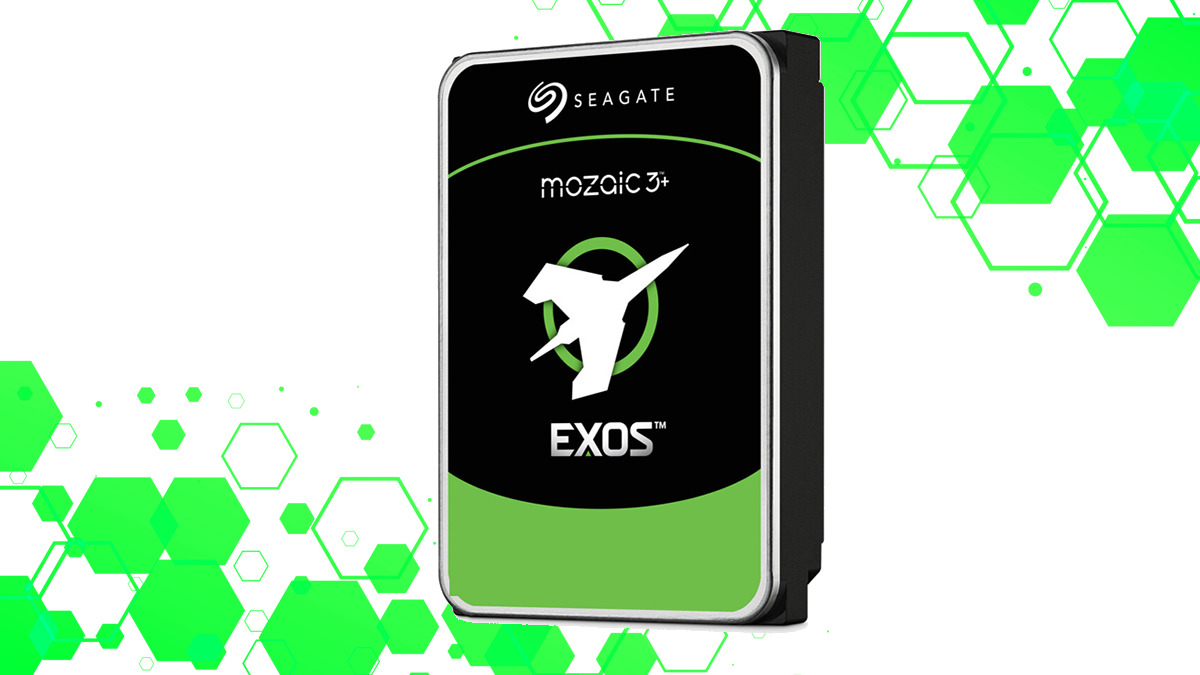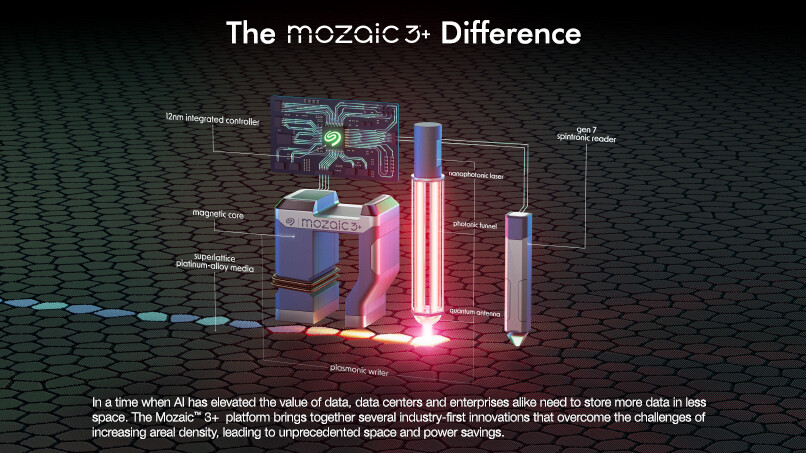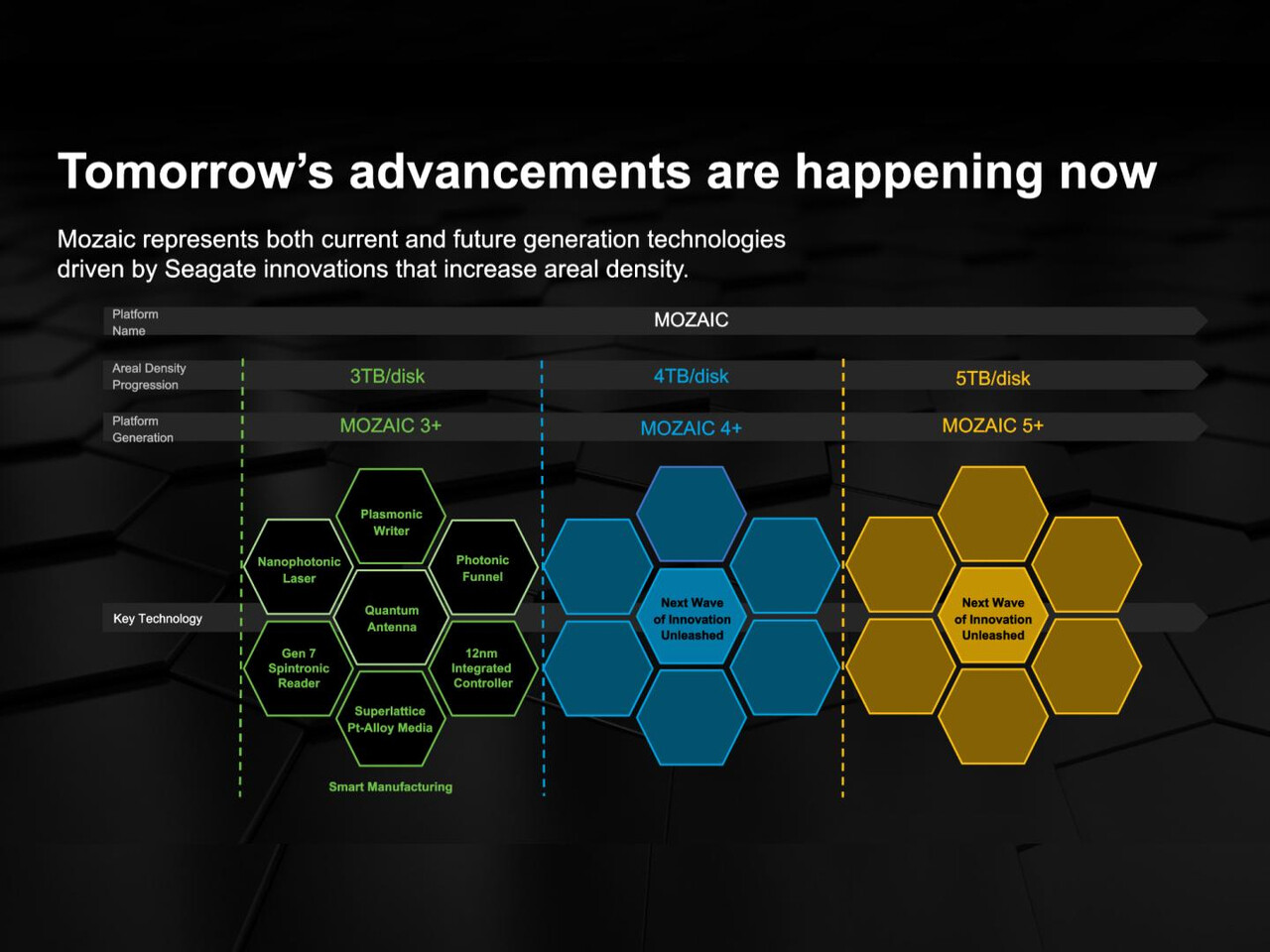Seagate ramps huge 30 TB+ HDDs and larger drives are coming!
Seagate’s pushing the HDD industry forward with 30+ TB drives with Mozaic 3+ technology
With their new Mozaic 3+ hard drive platform, Seagate has utilised Heat-Assisted Magnetic Recording (HAMR) technology to create HDDs with densities of 3+TB per platter. This platform powers Seagate’s latest Exos HDDs, which are available with 30TB storage capacities.
Seagate now expects to ship 30+TB HDDs this quarter to its hyperscale and cloud customers. With their increases in per-platter storage space, Seagate has successfully increased the amount of storage that can be inside individual servers, server farms, and full-on datacenters. With larger, more storage dense HDDs, data centers can greatly reduce server costs and power costs. Having fewer, more storage dense HDDs is much more power efficient than having the same storage over more, less storage dense drives.
When compared to Seagate’s older 16TB PMR drives, Seagate’s new Mosaic 3+ 30TB drives can deliver a 55% reduction in embodied carbon per terabyte.
Mozaic 3+ technology highlights:
- Superlattice Platinum-Alloy Media. Fundamental physics of higher-density recording requires smaller media grain size at nanoscale. The challenge here is that smaller grains are more unstable. Legacy alloys do not provide sufficient magnetic stability for effective and reliable storage. In Mozaic 3+ hard drives, the media alloy uses a pioneering iron-platinum superlattice structure, which significantly increases the magnetic coercivity of disk media. This allows for precise data writing and unprecedented bit stability.
- Plasmonic Writer. Since the media are made magnetically “harder” to prevent instability, the design requires a revolutionary writer—a marvel of miniaturization and precision engineering that is Seagate’s unique implementation of HAMR. Anchoring this technology is a nanophotonic laser, which produces an infinitesimal heat spot on the media surface to reliably write the data.
- Seagate plans to vertically integrate the nanophotonic laser into the plasmonic writer sub-system. “Developing this unique laser technology in-house for Mozaic 3+ will ensure even greater efficiency and yield to support rapid scaling of volume production,” Mosley said.
- Gen 7 Spintronic Reader. Smaller grains of written data are only useful if they can be read. Integrated along with the sub-components of the plasmonic writer, the reader also needed to evolve. Incorporating quantum technology, Mozaic 3+ includes one of the world’s smallest and most sensitive magnetic field reading sensors.
- 12 nm Integrated Controller. Efficiently orchestrating all this technology called for an integrated controller, a system-on-a-chip, developed entirely in house. This sophisticated application-specific integrated circuit delivers up to 3 times the performance compared to prior solutions.
The future of Seagate’s Mosaic 3+ tech
Moving forward, Seagate plans to upgrade their Mosaic 3+ technology to further increase storage densities. This will be achieved by enabling increased per-platter storage within future HDDs. Seagate currently have 4+ TB and 5+ TB HDD platters on their roadmap, which could enable 40+ and 50+ TB HDDs in the future.
In time, we should expect Seagate to launch new 30+ HDDs across all major markets. This includes the enterprise/edge markets, the NAS market, and others.
You can join the discussion on Seagate’s 30+ TB HDDs and future plans on the OC3D Forums.






